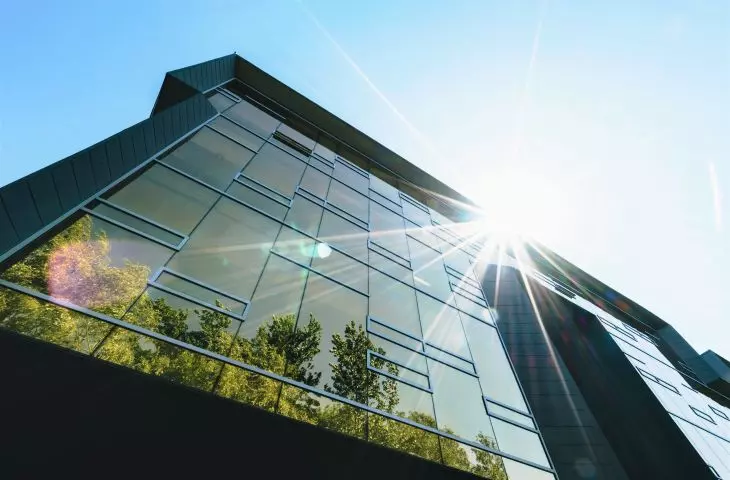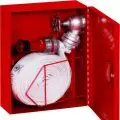Have you ever wondered what it would be like to live outside the city? Friends have hinted at a move, mentioning forests at your fingertips, quiet, peace and quiet, being more "eco"? Moving outside of urban areas may indeed seem like a good idea for the future on the surface. However, in an era of growing environmental awareness, is it really such a good idea? Architect Pawel Wolejsza writes about what mass migration outside cities looks like from an ecological and economic point of view .
The problem of urban sprawl has affected many of the world's agglomerations. so-called urban sprawl is an increasingly common phenomenon on the old continent, especially when undeveloped investment plots within the city run out. This problem is beginning to affect more and more Polish cities. A good example of urban sprawl is Detroit, which, after years of downtown desolation and the growth of satellite cities around it, had to implement a document to return life to the city1. To do this, a number of urban changes and investments were made.
Living in single-family homes, in the suburbs or by the woods, is comfortable, but only for those living in a particular property. It should be remembered that the realization of hundreds of thousands of single-family houses under cities, is unfortunately against the principles of sustainable development. This is because each building requires the implementation of supporting infrastructure. These include above-ground utilities, roads or driveways. Living in the suburbs also requires daily car trips to local or supra-local urban centers with services, as well as maintaining the cost of repairing and depreciating roads and supporting infrastructure. These costs are borne by both us and nature.
During a study for the Polish Association of Real Estate Developers, the ratio of the built-up area of Warsaw's Cosmopolitan apartment building to the area occupied by new single-family homes was analyzed, among other things. The results clearly indicate that one residential high-rise is equivalent to about 236 typical single-family buildings to populate the same population. In addition, one residential tower occupies an area of undeveloped land about 100 times smaller than 100 newly built, typical single-family homes. In such an area, there are meadows or forests under cities before they are developed.
Economics or ecology? The city and climate change
Compact and dense cities use space more efficiently and are more ecological. In a compact and dense city, there are problems of a different type. In a changing climate, too high a proportion of concreted area to biologically active area can have harsh effects. These can include: flooding after heavy rains or even the problem of the so-called urban heat island, for the reason that any man-made material tends to heat up more than natural materials.
The minimum biologically active area, or so-called PBC factor, is specified in the technical conditions2, both its definition and percentage. Sometimes, however, the coefficient is defined by Local Development Plans or development conditions. Unfortunately, even provisions that are seemingly clear and legible can be, and are, interpreted by authorities in different ways. Local zoning plans define the investment possibilities of a plot of land, but they take a long time to be enacted. They usually do not keep up with the changing culture, way of life or expectations of society. This becomes a problem when new, innovative products or services appear on the market. This was the case, for example, with parcel machines, which initially caused a lot of formal trouble, and today, with the popularization of technology, they have their own legal definition.
The changing culture also has an impact on designed settlements. As recently as 10 years ago, waste segregation bins were visible on very few developments. Today it is an obligation. In addition, over the past 10 years, the amount of waste generated by residents has increased. The pandemic has caused these values to rise, due to parcel shipments. Today, many communities and cooperatives have to enlarge existing garbage sheds.
Over the past few years, we can see a lot of changes taking place on the Land Development Project (also known as PZT), or investment area. It is usually designed to maximize the investment potential of the plot. While little has changed in this regard, however, the PZT has begun to become saturated with other elements - electric chargers, pumps and bike racks. Human and animal drinkers, insect houses, solar benches or rainwater retention gardens are becoming more common.
This extent of the development area, where development can no longer be carried out, enriched with new additional landscaping elements, is becoming increasingly valuable, especially in dense cities, so as to reduce the impact of climate change.
The problems found in small-scale development projects are repeated in much larger-scale projects. Development clusters, or developments carried out in phases, make it possible to group individual solutions that also occur in any smaller development.
what is urban sprawl?
© Pawel Wolejsza
Trash cans, playgrounds, fire roads, underground garages can be grouped together
Large-scale developments make it possible to optimize space for infrastructure accompanying the development, maximizing the so-called PUM3 on a given site.
Thus, it is not only more efficient, but also economically viable, and with reference to the first paragraph of this article - also environmentally friendly. All solutions that increase the biologically active area (PBC), and therefore further increase rainwater retention, are at a premium today.
Green roofs, although beautiful, are still more expensive by a minimum of 15% than standard solutions, and thus are less frequently chosen by investors. In addition, sometimes MPZP does not allow designers to include them in the biologically active area. On many investments, designers use ivy plantings, which are eventually supposed to cover facades heated from the sun.
Biologically activearea is currently the most important factor that can affect climate change and the efficiency of investments. It mitigates the microclimate, retains rainwater, cools the urban heat island. The temperature on green foliage will not exceed 40 degrees Celsius, while dark asphalt will warm up to about 80 degrees Celsius4.
Grouping of solutions accompanying investments, i.e. playgrounds, garbage sheds for waste, access, fire roads, access roads to underground garages, always affects the reduction of the paved, transformed area. In addition, it allows to increase the absorptive capacity of the investment, such a plot of land and is, as a result, more profitable for the investor.
A common problem that remains unresolved on many investments, for the reason that it is not obliged by law, is the place for the collection of bulky waste. The place for collecting municipal waste, invariably must meet several legal requirements, such as distances from building windows. Underground storage containers, such as those from Molok, are an interesting solution that saves biologically active space. They optimize waste space on PZT, are modular and allow waste segregation. Not only are they suitable as an off-road dumpster, but their capacity can be a multiple of a dumpster shed using the same paved area.
One of the ecological trends is the creation of sharing places, supporting the model of sharing economy and circular economy, the so-called circular economy. This could be shelving on the estate or a place to exchange things at the reception desk, or renting a private parking space in a garage using an app from one of the startups.
Another element that can be added on the PZT is art. Sculptures or bas-reliefs in the entrance areas create an identity for the place, build a community that cares about the building and whose members are simply happier.
what will the future bring us?
The future is adaptive design, which involves a series of changes in the life cycle of a building. Society and technology are changing faster than our buildings. Typically, new solutions are designed to replace or improve existing ones. As a result, cooperatives and communities can make improvements on their estates such as those being made on new developments.
The key in new developments is to take care of nature, to preserve what is of value to the site and the species on a particular plot of land and the ecosystems with which it is connected. One such solution is concrete retaining walls that do not interrupt the continuity of the ecosystem. Such a solution can be seen during a walking tour of Warsaw's Warszawianka recreation complex.
Pawel WOŁEJSZA
Pawel Wolejsza - architect, co-author of the ecological guide of the Eco Avengers group, which was established by the Polish Association of Real Estate Developers, as well as the guide of bird protection on newly designed investments. Enthusiast of the circular economy model and ecology in the broadest sense.
1 Detroit Future City Strategic Framework Plan.
2 Regulation of the Minister of Infrastructure on the technical conditions to be met by buildings and their location, dated April 12, 2002.
3 PUM - Useful Area of Dwellings.
4 According to a survey conducted at the 2020 Climate Picnic.


















